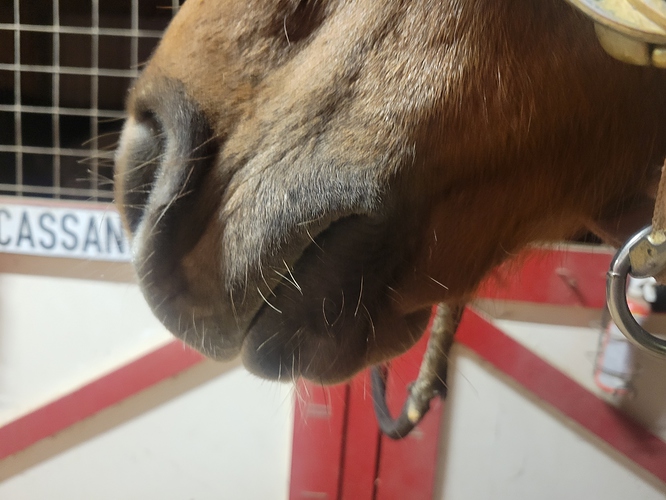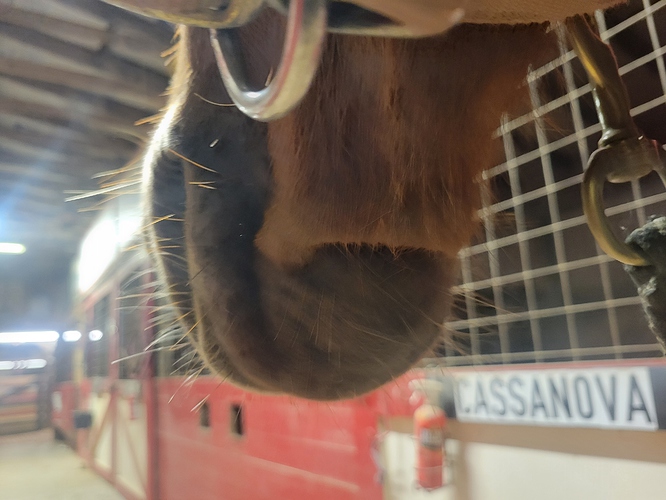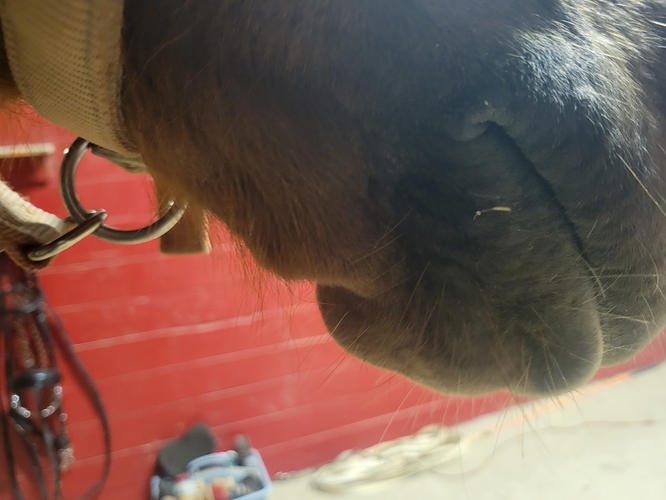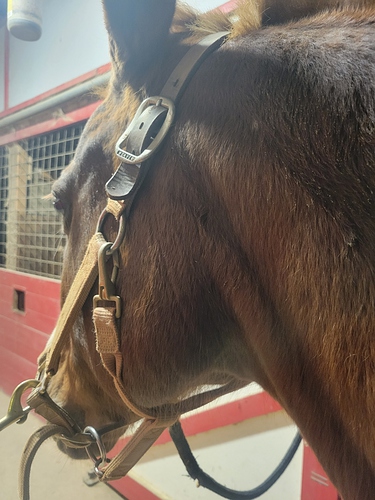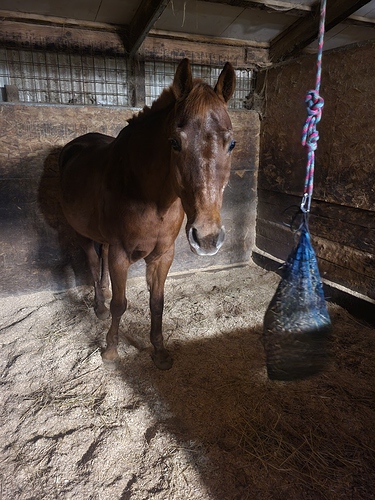It’s shown up one day and gone the next in the last couple months. Just the last few days has it persisted, and the vet should be out this week. I hope it’s nothing, but need her to take a look!
Is your guy out on pasture? I didn’t see that in the comments above.
I have an old pony here that had something very like this. He has Equine Metabolic Syndrome/IR. Veterinarians indicated what others have in comments above; potential grass mumps, allergies, and etc… but the condition didn’t precisely present like any of those for a firm diagnosis. The only thing that stopped this in my pony was steaming all of his hay. Soaking didn’t do it for him. Thankfully we have a Haygain steamer in the barn due to other horses who required the steamed hay.
No, he is not. He is turned out for 6-8 hours a day on a dry lot.
@AMackechnie I hope it doesn’t come to that, as this barn has none of those amenities and I’d be on the hook for steaming bales at a time to put in the loft for feeding.
Swelling was down probably 60% again last night. Roads were absolutely treacherous, so the vet did not make it out. Hopefully tonight or tomorrow she can get there.
He drank nearly a bucket of water between 3pm and 9pm though, which is quite unusual for him. I joke and call him a camel, as he really doesn’t drink much at all. Noted to continue to monitor in the future.
Hay steaming does indeed add more work and I can see how it would be too difficult in your current situation. The hay steamer runs for an hour and must be monitored because it doesn’t have an automatic shutoff and the hay needs to be fed within 12 hours of steaming.
My old guy, 25, presented like this several months ago. There had been no changes in his feed or hay supplier. The vets checked it out and it was an abscess that just picked an annoying spot to brew. After daily hot towel soaks to draw it out, the abscess finally erupted and swelling went down.
My guy did develop a summer sore at that spot once we thought the abscess was finally healed but that’s a whole different story.
For what it’s worth, because of his age we did do bloodwork and a biopsy of that location just to make sure it wasn’t cancer or anything more severe. He is getting tested for Cushings once Mr. Hot Mess has his summer sore completely closed and healed.
Feeling like Columbo over here. Have you tested for PPID? My old guy presented with infected lymph glands under his jaw and he finally tested + for PPID. This was years ago now.
Since your guy isn’t on pasture if it isn’t PPID then sounding more and more like an infection of some sort?
I alllllmost got him tested this past spring (peer pressure, as my friends horse was being tested and they’re the same age), but he really doesn’t show any symptoms of it - until now! ha. I can arrange for him to be tested come spring.
Vet is coming Friday now.
My guy did not show the classic long hair symptoms either. But he did drink alot, pee alot and was having infections. You are ticking some boxes. It’s a cheap test and why not test insulin why you’re at it. I mean cheap compared to laminitis.
You’re not kidding.
I’ll put them on the list for April vet check. He gets effectively zero NSC (no grain, hay only, and it’s mid-quality grass hay with zero alfalfa), so I’m not worried about founder at this time. I think the test for PPID has to be done in the spring anyways? Or am I mistaken?
You can test resting ATCH whenever according to my vet and do not run TRH in the fall.
I get my pony tested spring and fall to check his levels and make sure meds are at the right amount.
Early July - early Dec is the best time for ACTH
Early Dec (which includes Fall) - early July is best for TRH
You CAN do ACTH whenever, but it’s very, very easy to have a false negative from early Dec - early July
Minor thread jack here… JB, what are the timeframes related to? Would they be the same for a horse that was in a drylot situation with little to no pasture access? Is it just related to the seasons/length of daylight, etc?
Throatlatch swelling down 75% I’d say. He drank a full bucket of water again.
Sheath a little swollen on same side as throatlatch.
Also has this weird… bump? Lump? By his chin… vet coming tomorrow.
He sure is cute. Glad the vet is coming.
Sheath swelling could be edema looking for the lowest point.
Any ventral edema you noticed, down the midline?
If he eats head down, the swelling on the head could be part of that also.
At least he looks bright and contented.
Our Cushing’s horse first symptoms we needed to increase his Prascend was his sheath would swell a bit, and after a couple weeks on more medication it would go back down to normal.
He also had some swelling similar to your horse on his neck, but on the right side and not as large an area, half that size.
Maybe vet tomorrow will have an answer and treatment for what ails him.
Will be interesting to know.
My gelding was diagnosed in Feb a couple years before he died (of non-Cushings related causes). ACTH was 68, not very high compared to any other horse I know with Cushings. He had started to shed in Jan (normal amount of winter coat) but then stopped shedding in Feb and lost his appetite. We immediately put him on Prescend.
I think it would be worth testing now just to be safe. If negative, test again later in the year. As mentioned above, better to catch it as early as possible if it is, in fact, PPID.
No ventral edema, though he has had something like that in the past - maybe two years ago? - that required the vet out and a round of antibiotics which cleared it up quickly.
Looking forward to the vet getting her hands on him today.
length of day, and how they affect cortisol and ACTH values.
The actual values vary a bit depending on your latitude, so the same number (blood drawn the same day) will mean something a little different if you’re in Miami vs Bangor, for example.
The seasonal rise is when daylight hours start significantly reducing - Fall - and numbers start rising. Then they start dropping significantly after November-ish, then level off through later Winter, and coming into Spring they are getting to their lowest in the March/April timeframe (depending on where you are). Then in May-ish they start rising, slowly at first, then speeding up after the Summer Solstice
This site has a really handy chart
ACTH interpretation - The Laminitis Site
68 in Feb is pretty high, relatively speaking.
Late Fall to mid-Summer, the generally accepted upper limit is around 30.
To do a more apples to apples comparison, you have to compare the same test, done at the same time of year. But you’re right, I’ve seen numbers approach 1000 which is just 

